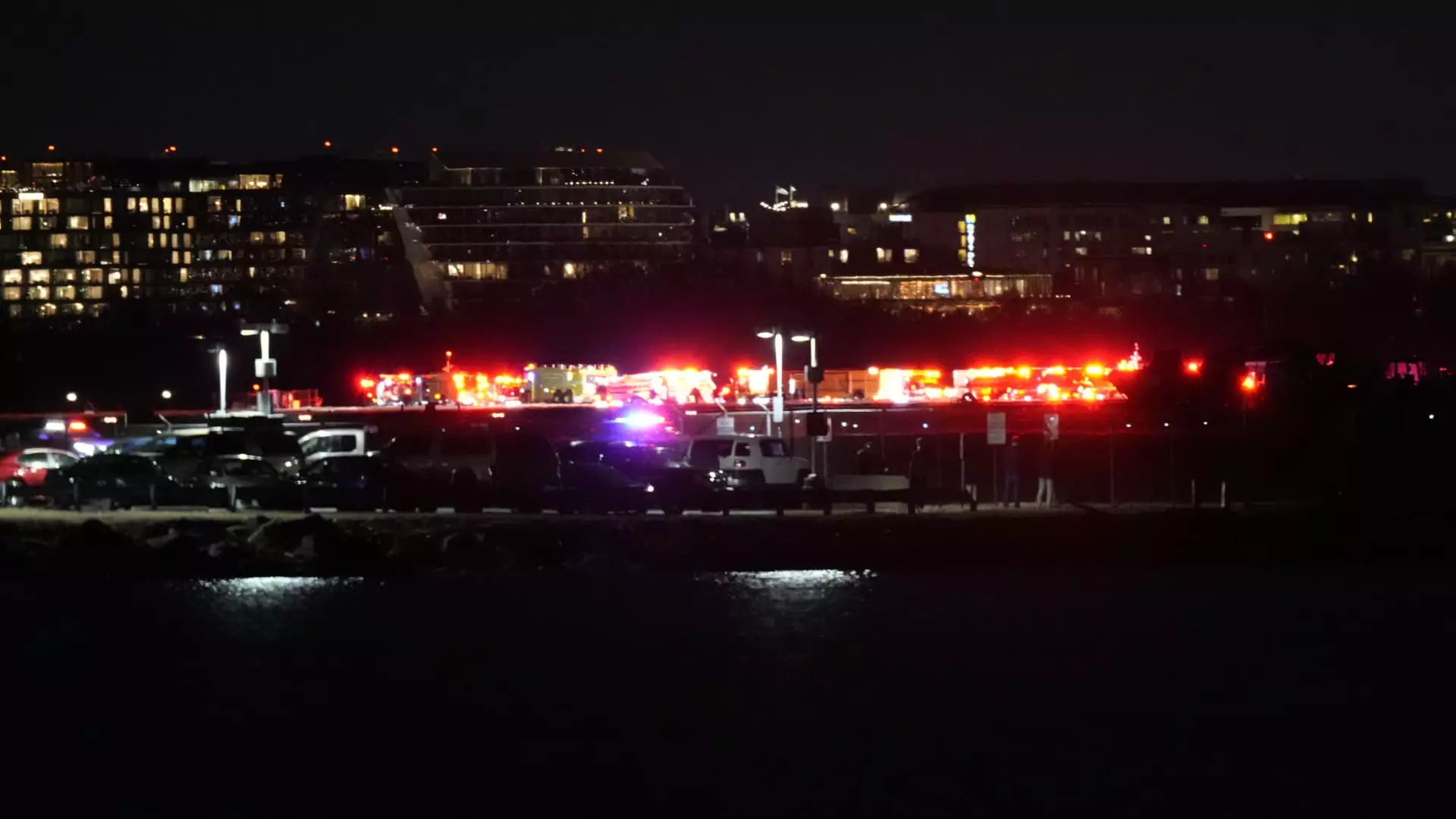On a seemingly ordinary evening, a serious aviation incident unfolded near Ronald Reagan Washington National Airport, involving an American Airlines regional jet and a military helicopter. The collision occurred around 9 p.m. ET as the PSA Airlines Bombardier CRJ700 passenger aircraft was preparing to land after its journey from Wichita, Kansas. Tragically, reports revealed that at least one of the aircraft ended up in the Potomac River, heightening concerns regarding the safety of all those aboard.
The American Airlines Flight 5342, carrying a total of 64 individuals—60 passengers and four crew members—was affected by this alarming event. The Federal Aviation Administration (FAA) and the National Transportation Safety Board (NTSB) immediately turned their focus to the investigation, aiming to uncover the sequence of events that led to this dangerous encounter between civilian and military aviation. Witnesses on the scene reported a significant emergency response presence, indicating the gravity of the situation.
The Sikorsky H-60 helicopter, operated by the military, was involved in the collision, raising questions about communication protocols and air traffic control measures in the congested airspace around the nation’s capital. This incident not only poses immediate safety concerns but also calls into question the operational procedures in place for both civilian and military aircraft in the vicinity of airports.
Following the incident, the airport was immediately closed, causing disruptions and delays for countless travelers. The swift response from emergency teams underscored the urgency of the situation. Images circulating on social media platforms depicted a large assembly of first responders at the scene, capturing the seriousness of the mishap and the potential threat to lives involved.
Both the FAA and NTSB are now spearheading a thorough investigation into the circumstances surrounding the collision. Factors such as air traffic control directives, pilot communications, and adherence to safety protocols will likely be scrutinized to prevent a recurrence of such an incident in the future.
The implications of this accident extend beyond immediate safety concerns. With President Donald Trump briefed on the alarming turn of events, it is clear that this incident has ramifications that reach the highest levels of government. The intersection of civilian and military aviation must be examined to enhance safety measures and coordination efforts.
The fact that a regional passenger jet was involved in a collision with a military helicopter highlights the need for ongoing dialogue and improvement in aviation safety protocols. As investigations continue, the public and aviation industry stakeholders alike will be hoping for comprehensive insights that will lead to enhanced operational guidelines to safeguard both civilian and military aircraft in U.S. airspace.
While the investigation is underway, the aviation community and the general public will keenly await updates, hoping for clarity on how such a collision could occur and what measures will be taken to avert similar incidents in the future.


Leave a Reply